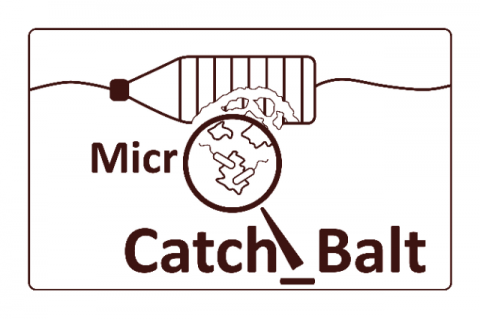MicroCatch_Balt
MicroCatch_Balt

PD Dr. habil. Matthias Labrenz
Leibniz Institute for Baltic Sea Research Warnemünde / IOW,
Environmental Microbiology
Seestraße 15
18119 Rostock
Phone: +49 381/5197378
e-mail:matthias.labrenz@io-warnemuende.de
This project determined sources and sinks of microplastic in the Warnow river basin, as well as relevant dissemination processes on its way to the open Baltic Sea. Separate models were linked so that the resulting model covers the entire river basin including estuary and coastal waters. The linked models served to identify hotspot areas of microplastic entry and to estimate the effects of microplastic reduction measures in parts of the river basin. By converting the models into a handson multitouch table, project participants made interactive, creative learning modules that were presented in the form of a traveling exhibition in communities around the German Baltic coast from Stralsund to Flensburg. Further, MicroCatch_Balt included the examination of anti-fouling paint and extreme weather events as sources and higher organisms as sinks. Based on this, MicroCatch_Balt covered the most important aspects of microplastic contamination of limnic to marine systems in northern Germany, thereby offering interest groups the expertise with which to develop future monitoring and strategies for reduction.
Main areas of work
- Sampling in the Warnow river basin and estuary, extraction and identification of microplastics
- Modelling of microplastic input into the Warnow system of diffuse and point sources
- Development of two multi-media modules for a multi-touch table and organisation of a traveling exhibition
WP 1 Sampling of microplastic from the environment
Contact person
PD Dr. habil. Matthias Labrenz, Leibniz Institute for Baltic Sea Research, Environmental Microbiology, Seestraße 15, 18119 Rostock, e-mail: matthias.labrenz@io-warnemuende.de
Project partner
IPF
Short description
In WP 1, environmental samples (water, sediment, soil, benthic and pelagic higher organisms) were collected, processed and identified in the Warnow area. Of particular interest were potential sources such as wastewater treatment plants / sewage separation, drainage ditches, erosion areas, industrially influenced areas as well as extreme events like Hanse Sail, New Year‘s Eve, heavy rain and storm events. Potential sinks, including higher organisms (mussels, worms, fish), beaches and sediments were also sampled. In all samples, the microplastic particles were identified and quantified using spectroscopic methods.
WP 2 Modelling of the Warnow estuary and the catchment area
Contact person
Dipl.-Ing.agr. Peter Kreins, Johann Heinrich von Thünen Institute - Federal Research Institute for Rural Areas, Forestry and Fisheries, Bundesallee 50, 38116 Braunschweig, e-mail: peter.kreins@thuenen.de
Project partner
FZJ, IOW
Short description
By adapting and combining different regional models, spatially high-resolution modelling of landside diffuse and point source of microplastic emissions into the river basin of the Warnow took place. In this way, on the one hand the hotspots of pollution in the Warnow river area were identified and on the other hand the entire landside microplastic entries into coastal waters were quantified.
WP 3 Microplastics Touring Exhibition
Contact person
Dr. Barbara Hentzsch, Leibniz Institute for Baltic Sea Research Warnemünde, Scientific Management and Communication, Seestraße 15, 18119 Rostock, e-mail: barbara.hentzsch@io-warnemuende.de
Project partner
FhIGD
Short description
In WP 3 a traveling exhibition with an interactive multimedia learning module was developed, which presents the project results in the form of animations. The traveling exhibition was shown in Stralsund, Rostock, Hamburg, Kiel, Eckernförde and Flensburg. The respective exhibition openings was accompanied by plenary discussions with representatives of the local environmental authorities and scientists.
WP 4 Project management
Contact person
PD Dr. habil. Matthias Labrenz, Leibniz Institute for Baltic Sea Research, Environmental Microbiology, Seestraße 15, 18119 Rostock, e-mail: matthias.labrenz@io-warnemuende.de
Short description
WP 4 covered project management and ensured efficient and productive execution of the project. The tasks of WP 4 included coordination with the other “Plastics in the Environment” projects PLAWES, PLASTRAT and the BONUS project MICROPOLL, as well as monitoring finances and work results, organising regular project meetings, disseminating project results to the public, and supporting the project manager with regard to internal and external scientific communication.
